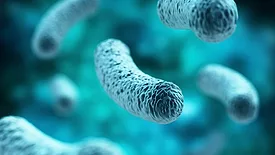Home » Legionella
Articles Tagged with ''Legionella''
Service Plumbing Pros | Matt Michel
Plumbers can spot add-on opportunities while on calls to help protect customers.
Read More
Plumbing Talking Points | David Dexter
Reducing the potential for pathogenic growth in showerheads
New products provide a step in the right direction.
February 6, 2024
PM Video Podcast
Best practices for Legionella prevention in plumbing systems
Discussing prevention and mitigation strategies with Special Pathogens Laboratory’s Dr. Janet Stout.
October 18, 2023
James Dipping: Remediation tactics for Legionella outbreaks
What to do if Legionella is found in a plumbing system.
May 8, 2023
James Dipping: Non-chemical water treatment options for Legionella control
Specialty components to further reduce the risk of Legionella — part two.
March 6, 2023
James Dipping and Molly Scanlon: 5 tips for reducing Legionella risk
Utilizing water management for construction and commissioning building
September 7, 2022
James Dipping: The facts about Legionella, and why we should care
Cases of Legionnaires’ disease are rising significantly.
July 7, 2022
Christoph Lohr: Understanding the reasoning behind Hunter's Curve
Misunderstanding Roy
July 6, 2022
STRATEGIC PLUMBING INSIGHTS
Christoph Lohr: The increasing frequency of plumbing failures
Unintended consequences
June 6, 2022
Keep your content unclogged with our newsletters!
Stay in the know on the latest plumbing & piping industry trends.
JOIN TODAY!Copyright ©2025. All Rights Reserved BNP Media.
Design, CMS, Hosting & Web Development :: ePublishing















